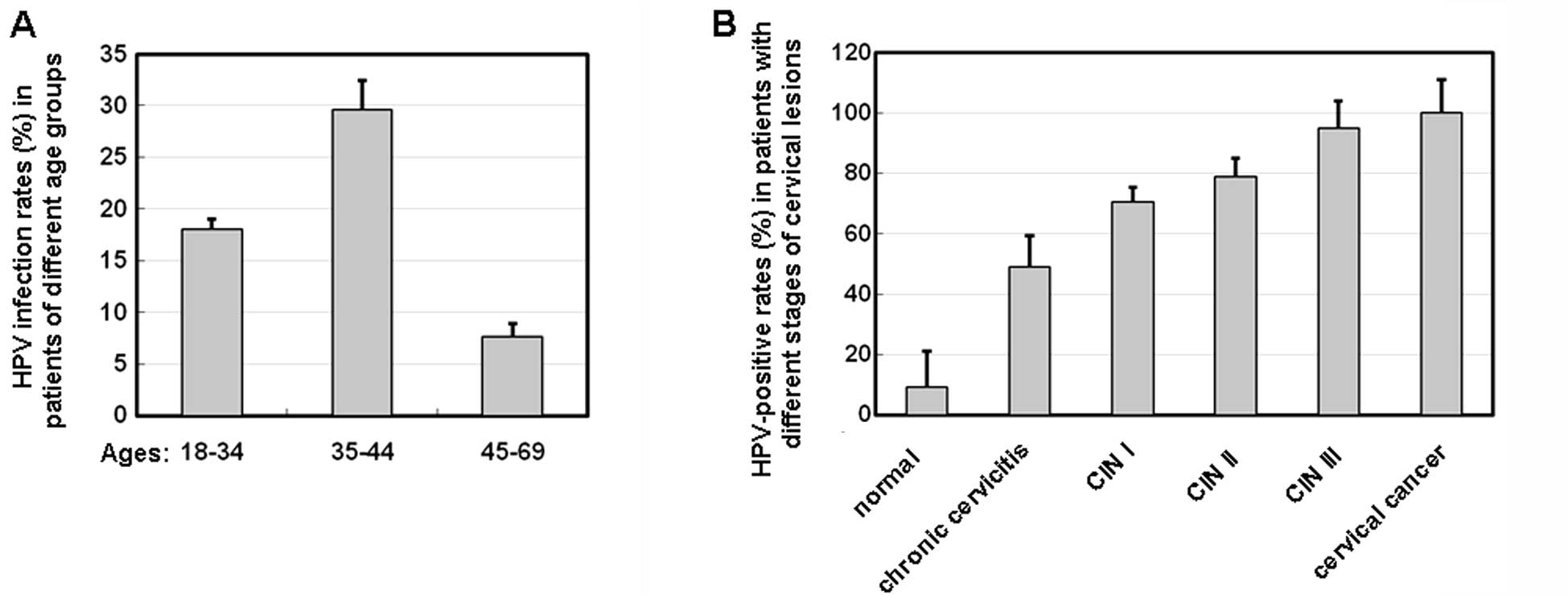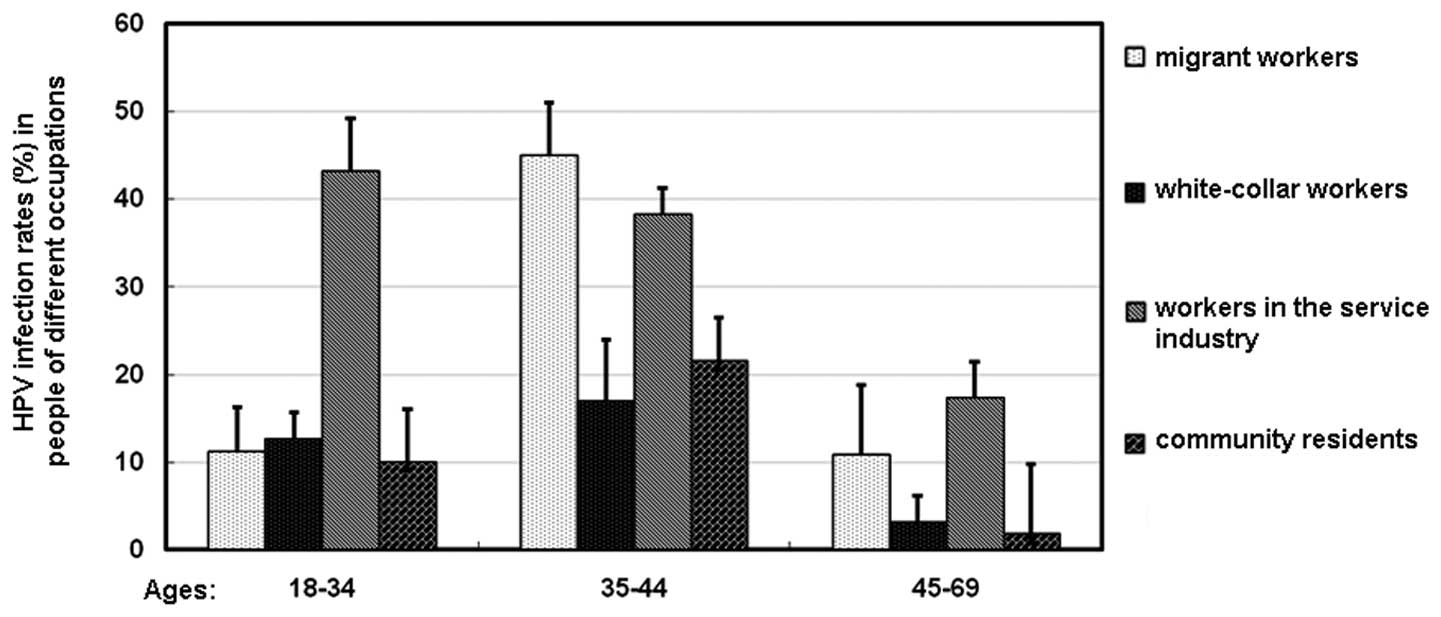Genotype distribution and the relative risk factors for human papillomavirus in Urumqi, China
- Authors:
- Published online on: April 23, 2013 https://doi.org/10.3892/etm.2013.1073
- Pages: 85-90
Metrics:
Total
Views: 0 (Spandidos Publications: | PMC Statistics:
)
Total PDF Downloads: 0 (Spandidos Publications: | PMC Statistics:
)
Abstract
The aim of this study was to investigate human papillomavirus (HPV) infection and HPV genotype distributions in Urumqi, Xinjiang, China. The related risk factors for high-risk HPV infection was also analyzed. A stratified cluster sampling method was used for the population-based cervical cancer screening of women aged 18-69 years in the Urumqi Saybagh district. Exfoliated cervical cell samples were collected for liquid-based cytology detection and HPV genotyping DNA microarrays. Education level, number of sexual partners, condom use and occupation were used in the multivariate analysis model. The HPV infection rate of women working in service industries was significantly higher compared with those of white-collar workers, community residents and migrant workers. The 35-44-year-old migrant worker group had the highest HPV infection rates among all of the groups in the three different age ranges. The number of marriages, education level, smoking history, number of abortions, use of condoms, number of sexual partners, number of sexual partners in the past five years and occupation were all associated with female HPV infection rate (P<0.05). The 35-44-year-old women were the age group with the highest HPV infection rate. The HPV infection rate of females in service industries was the highest. Education level and condom use were protective factors of HPV infection, while the number of sexual partners and occupation were risk factors for HPV infection.












